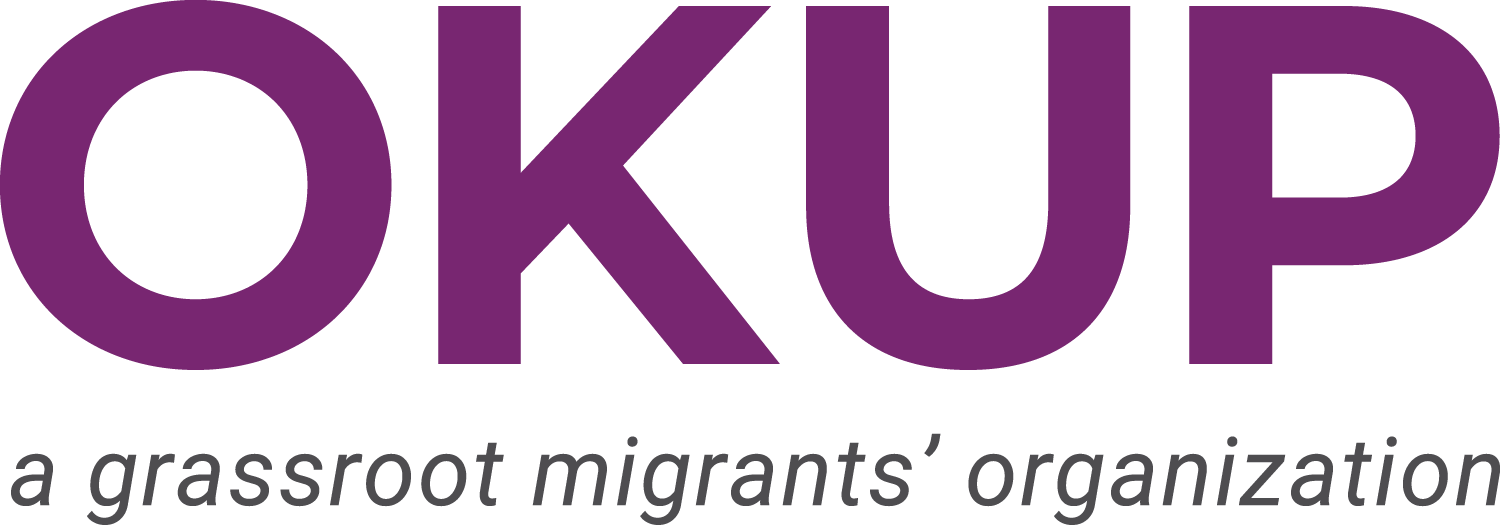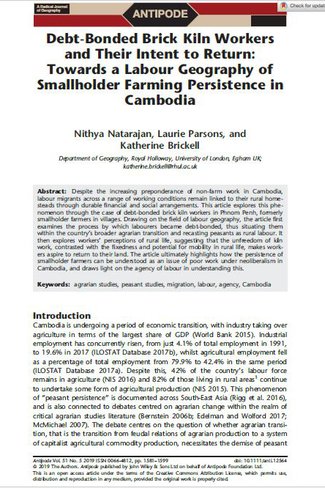Debt-Bonded Brick Kiln Workers and Their Intent to Return: Towards a Labour Geography of Smallholder Farming Persistence in Cambodia
2019
- Author
- Natarajan N, Parsons L and Brickell K (Antipode, Volume 51, Issue 5)
- World region
- East Asia and Pacific
- Origin of migration
- Kampong Cham province and Prey Veng province, Cambodia
- Area of transit
- No data available
- Destination of migration
- Phnom Penh, Cambodia
- Who is affected
- Agricultural communities
- Type of climatic event
-
Rapid-onset event, Slow-onset event
Droughts or floods. Extreme weather events harm households' ability to generate income because they negatively impact agricultural production. Climate change worsens insecurity for farmers.
- Type of migration/mobility
-
Internal, Rural to urban
- Destination industry or sector
-
Brick kilns
- Type of modern slavery
-
Debt bondage
Smallholder farmers can end up in debt bondage when they borrow money from kiln owners to repay debts with local lenders. Often, their whole family then moves to the kiln so they can work off their debt bond. Because they cannot leave the kiln, when work at the kilns is suspended they often have to borrow more to meet basic needs.
- Link between climate change, migration and modern slavery
- Indirect
- Key vulnerability factors
-
Key factors that increase vulnerability to debt bondage include: poor social protection, weak government support for agrarian development and a proliferating microfinance industry, compounded by the effects of extreme climate events, such as droughts or floods. This vulnerability is worsened by a lack of alternatives and household debt incurred to support agricultural production (either to maintain or expand it) and medical costs. The impunity of brick kiln owners creates an environment that allows debt bondage and therefore increases people's vulnerability to it.
- Summary
-
This source looks at the link between climate change and debt bondage, explaining how farmers end up in debt bondage.
- Recommendations
- N/A



